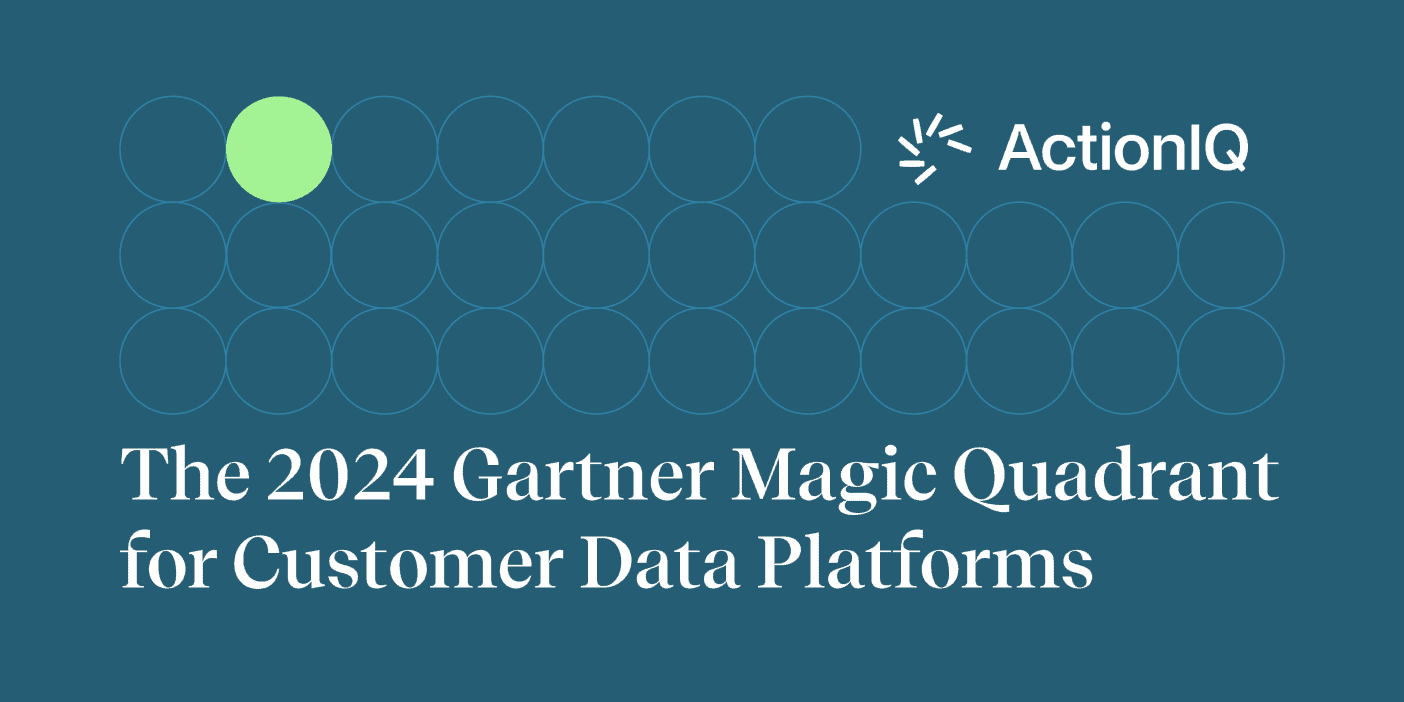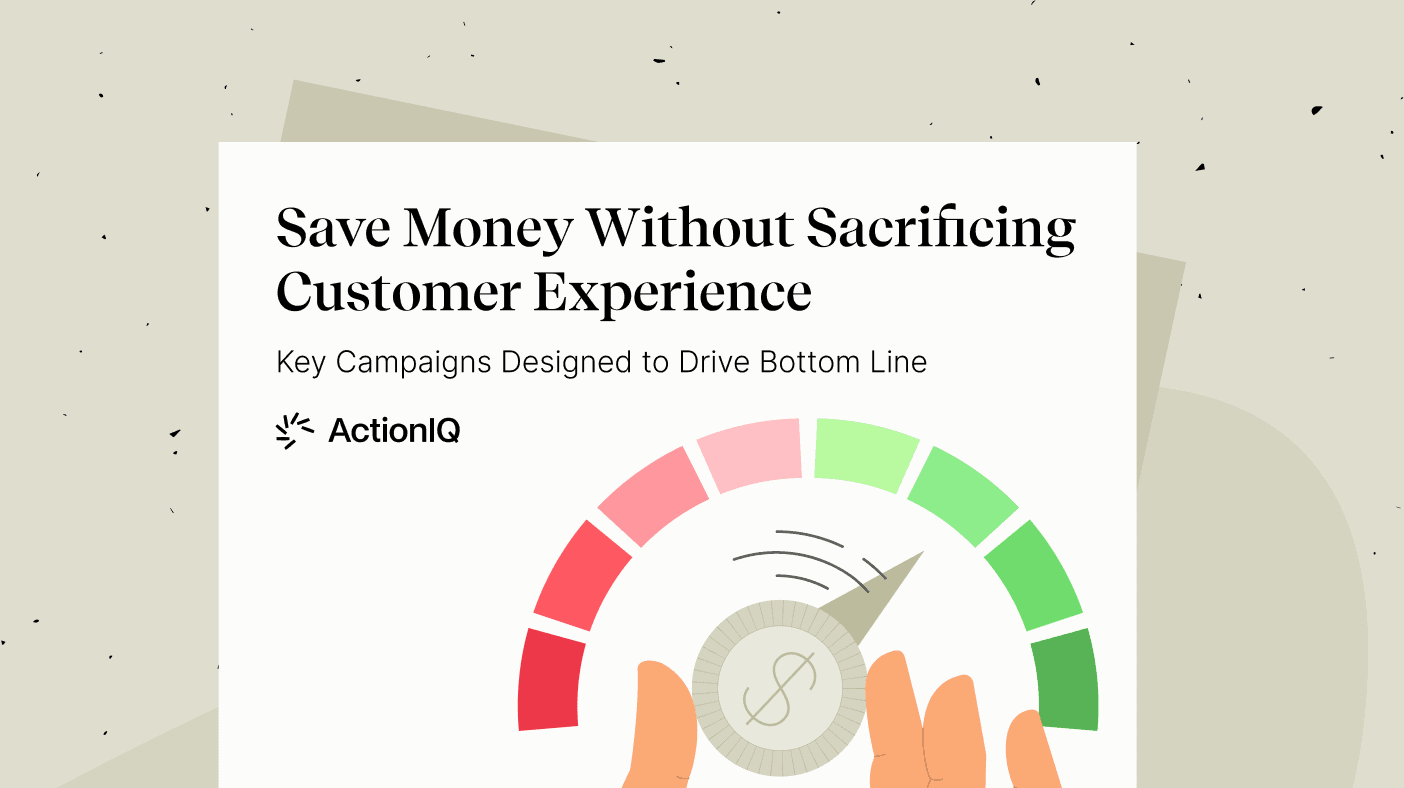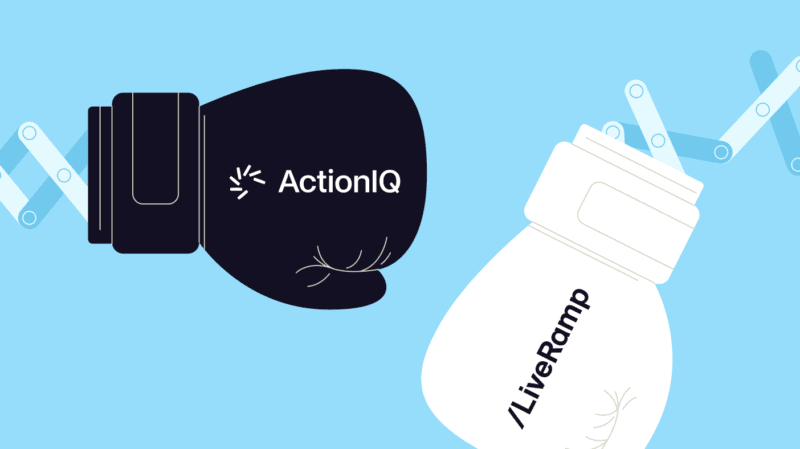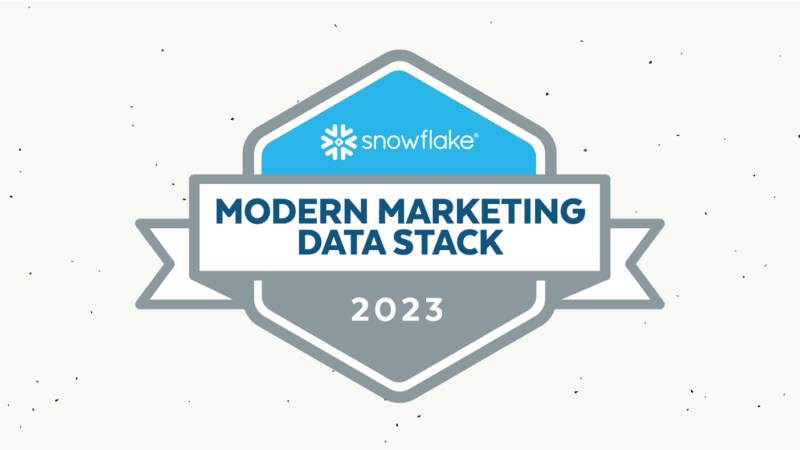What Is a Martech Stack?

A marketing stack—also known as a marketing technology stack, or martech stack—is the set of technology marketing professionals use to manage, execute, measure, and improve their marketing efforts.
Unlike enterprise resource planning (ERP) systems or human resources (HR) systems, which are often a single integrated tech suite from one vendor, a marketing tech stack is made up of multiple point solutions, addressing a specific challenge or goal.
For most established enterprises, martech stacks are a mix of homegrown systems, legacy software, vendor-provided on-premise solutions, and cloud-based software as a service (SaaS) offerings. The average marketing organization has deployed an astounding 91 different tools as part of the marketing stack. And as of 2020, there are an astounding 8,000 different vendors in the martech landscape. That’s a lot of point solutions developed and implemented by many other vendors, consultants, and in-house IT teams.
A Marketing Cloud is Only a Piece of a Complete Marketing Stack
While the specific tool of the marketing cloud is often dubbed an “all-in-one” solution from a single vendor, marketing clouds are point solutions collated by the vendor over years of corporate acquisitions. And in medium or large enterprises, they are almost universally supplemented by dozens of best-of-breed or custom-deployed point solutions.
CDPs at the Heart of the Marketing Stack
To manage the sprawl and lack of integration between components, enterprises are increasingly looking to customer data platforms (CDPs) to serve as a centralized command and control center for their ever-growing and increasingly complex martech stacks. . More on that a little later in this blog. First, let’s talk about why marketing stacks are essential.
Why You Need a Martech Stack
Your marketing tech stack supports all your marketing operation across every phase of the customer’s journey with your brand, bringing the following capabilities and benefits to bear:
- Process Automation — Taking previously manual processes and automating them with marketing automation software and technology allows your business to take the practices developed by your best marketers and bake them into your business’s everyday operations. Your company’s best marketing strategies become thinking becomes the methodology that’s repeated across every aspect of the business—and you can continue to refine, automate, and operationalize new learning as it arrives.
- Innovation — Marketing technology vendors are constantly pushing the envelope to develop new and efficient methodologies for attracting, converting and engaging customers throughout the customer journey. By adding new, packaged technology into the marketing stack, enterprises can innovate rapidly and take on new processes and techniques that drive competitive advantage while boosting revenues and/or creating new efficiencies.
- Customer Data & Insights — Modern businesses are competing on data and their ability to turn that data into insights that lead to competitive superiority. When you manage marketing processes within your marketing stack, every marketing action and customer reaction generates data. By effectively harnessing that data—and enriching it with your own data or externally acquired data—you can get closer to the customer, better understand their needs, and continuously measure and improve your marketing operations. Turning the data-driven business’s goal into reality—and driving greater sales, profit,, and cost-effectiveness.
- Marketing Efficiency — Your marketing stack takes processes that were historically done manually and leverages marketing automation software and technology to perform them faster, more efficiently, and at far lesser expense. Your marketing professionals spend less time “turning the crank” and more time testing, innovating, and optimizing. The result is greater business agility and more return from every marketing dollar you invest.
Users of the Martech Stack Within the Enterprise
The marketing technology stack is directly or indirectly used by several different organizations and functions across the enterprise. These include:
- Customer Acquisition Teams — Teams and individuals who are responsible for customer acquisition leverage various components of the marketing technology stack to manage and execute digital marketing, affiliate & partner marketing, events, app & website optimization and much more.
- Brand Marketing & Communications Teams — Brand marketers and communications pros use tools within the marketing technology stack to manage the brand’s presence and marketing strategy on social media, public relations outlets and traditional mass media such as broadcast TV & radio as well as print
- Marketing Operations (aka Marketing Ops) — Marketing operations teams—an increasingly important function in most modern enterprises—use the tech stack to manage and monitor marketing campaign performance, glean insights from customer data and other marketing data, and support the extended marketing team in making optimal strategic and execution decisions when it comes to deploying and improving marketing efforts.
- Sales — Sales teams use the data captured within the marketing stack to better understand the wants and needs of prospects and customers. This is relevant in both B2C (think of an insurance agent) or B2B marketing (think of a software sales engineer) where the sales rep can use insights about the customers’ interests, behaviors, the offers they respond, the communication channels they prefer, and past purchase history to recommend next best products and services as part of an offer that’s most likely to win the sale.
- Customer Service — Modern marketers are increasingly charged with growing customer loyalty and deploying initiatives to reduce customer churn. Customer service interactions are often where loyal customers are won or lost, and early signals of churn can be identified. Additionally, service interactions can also market new offerings to customers, especially when those offerings are personalized based on past behaviors and interactions. That’s why more and more service and support processes are integrated with marketing stacks, so key customer data and insights can be passed between them—and acted on.
- Product Marketing — Product marketers play a key role, especially when marketing complex or considered products—such as financial services offerings or sophisticated technology. Product marketers use the martech stack to manage and deploy content marketing techniques that educate prospective buyers on their products’ utility and value. They also use technology to monitor and manage coverage and sentiment among press, analysts, and other influencers related to their product offerings.
Typical Components of a Marketing Stack
The marketing technology landscape has significantly developed over the past decade and is now able to optimize any type of business. However, each company will need to find the perfect martech stack that matches their unique needs. With differing business needs across every enterprise, a wide range of options for how each component of a stack is implemented—and which vendor provides it—it’s nearly impossible for any two companies’ martech stacks to be alike. But across most stacks, you’ll find components that address the following critical areas of modern marketing:
- Data Integration Tool — Data integration tools bring together disparate data from multiple systems to help your marketing team gain a more holistic view of the business. For instance, by joining customer data with transaction detail data, a marketer can see which products a given customer has purchased in the past.
- Identity Resolution Tool — The same customer may be identified as Jay Johannessen in your direct mail database, and Jason Johannessen in your email database. Identity resolution tools use a range of techniques to resolve multiple instances of the same customer into a unique “golden record” identifier, so you can more comprehensively understand the interactions each individual has with your business.
- Customer Database — A customer database is a “mini data warehouse” focused on collecting data about customers and their interactions with your business. The database is typically maintained by a marketing technologist or your IT department, accessed via SQL-based query tools, and has a relatively fixed set of attributes along which marketers can conduct customer analysis. (Read up on best practices for customer database management.)
- Customer Analytics Tool — A customer analytics tool is a specific tool typically used by analysts in your marketing team to submit SQL-based queries to a customer database (and other systems containing customer data) to create and measure the performance of customer segments and lists.
- Marketing Automation Tool — A marketing automation platform takes multi-step or multi-channel marketing processes and enables marketers to set them up to run independently. Some of the earliest marketing automation tools were used to create email sequences that would behave differently depending on how or if a person responded. Since then, automation tools have been introduced to execute content marketing in social media and text messaging as well as execute lead scoring and much more. Typical marketing stacks include multiple specialized tools that can be classified as marketing automation.
- Content Management System (CMS) — A CMS allows a marketer to manage, update, optimize, and test (for example, via A/B testing) content marketing efforts on websites, blogs, or even web and mobile apps where marketers engage customers.
- Digital Asset Management (DAM) — Large brands must manage many thousands of digital assets. DAMs are business and marketing tech that make it possible to do so in a centralized repository that is searchable and helps with version control, access rights, and more. So everyone in the company is always using the latest version of images, logos, product details as part of their marketing efforts.
- Email Service Provider (ESP) — ESPs are one of many marketing tools that allow marketers to send email marketing campaigns to the recipients of their choosing. The most straightforward enterprise-grade ESPs offer specific capabilities that scale, while more complex ESPs may include marketing automation features, customer attribute creation & management, segmentation capabilities, and automated personalization.
- Tag Management System — Modern websites app properties rely on dozens to hundreds of 3rd party services that are embedded within the property using tags. Rather than individually inserting tags directly into code, tag managers centralize management of these 3rd party tags acting as a “traffic cop” for real time data that gets passed to and from a property and 3rd party providers.
- Web Analytics Tool — Web analytics capture granular details about user activity on a brand’s web properties. Analysis can be conducted within the tool, or the data captured within the tool can be shared out to other analytics systems. Web analytics help marketers understand traffic, user navigation patterns, the quality of the user experience and assist with attribution of campaigns and content to marketing conversions and marketing-driven revenue.
- BI/Marketing Intelligence — BI marketing tools are general-purpose analytics systems that access customer databases and data warehouses to build reporting and ad hoc analytics that deliver a broad range of marketing intelligence and insights.
- Advertising Technology — AdTech as a martech tool was once a massive and sprawling space of vendors and options—but in recent years, advertising has begun to converge on a handful of the most dominant advertising platforms. Digital advertising (and digitally-managed traditional advertising) is a cornerstone of modern customer acquisition—but is also becoming increasingly valuable in retargeting existing customers for repeat purchases. Marketers typically employ a mix of display ads, search engine marketing (SEM), ad tracking, remarketing, and attribution tools within the marketing technology stack to achieve their goals.
- Social Media — Modern martech stacks include tools to manage and monitor social posts and activity, measure brand sentiment among social media users, and engage customers and prospective customers in 1:1 and 1:many conversations.
- Search Engine Optimization (SEO) — Most marketers invest in both paid and organic strategies to grow their online presence and acquire customers. SEO is key to increasing organic traffic by ranking high on search engine results pages (SERPs) for keyword phrases that drive traffic and transactions. SEO tools in the marketing stack are designed to assist keyword research, optimize on-site content to rank for keywords, track and grow backlinks to your web properties, and much much more.
From Marketing Stack to Customer Experience Stack
Over the last decade, brands with above-average customer satisfaction have returned over 4x the value to shareholders versus their CSAT laggard counterparts. That’s why modern brands must compete on customer experience. Putting the customer at the center of everything you do is no longer a consideration but a requirement.
Business leaders in marketing, sales, customer service or other customer-centric roles must deliver on the CX imperative—deploying authentic experiences that set your brand apart from competitors.
However, traditional martech stacks (containing the components described above) are not designed to place the customer at the center of marketing initiatives. Rather, they are aligned around channel (e.g. web, catalog, store, app) or marketing sub-department (e.g. brand marketing, acquisition, CRM). With data siloed in separate systems, channels and sub-departments, these enterprises are incapable of delivering more than disconnected or fragmented experiences.
Leading businesses are now rethinking their sprawling martech stacks, seeking to transform them into modern customer experience (CX) stacks—where everything you do through technology is aligned and orchestrated around the customer. Departments and channels work together seamlessly, and the customer has one unified, authentic and personal experience with your brand.
Challenges to Achieving the CX Stack
But turning that vision into reality has proven challenging for many organizations. Those who have attempted to lean on in-house development to effect the transformation find that the rigidity of homegrown solutions makes it too difficult to:
- Handle new, increasingly complex data formats that must be integrated
- Interoperate with new systems and tools being brought online at a rapid pace—especially where data must be activated into a new customer touchpoint
- Deliver a sufficiently high-quality user experience to drive overwhelming adoption among business users
Organizations that have turned to their marketing cloud mega-vendors have also faced significant challenges. These include:
- A lack of interoperable applications and data models
- Inconsistent user experiences
- Major feature and function gaps
- Challenges with customer data portability for scaling personalization across all touchpoints
The Modern Approach to Breaking Silos and Achieving Customer Centricity
To bridge the gaps, connect silos, and remove the roadblocks to achieving customer-centricity, a modern customer experience stack, powered by a smart hub customer data platform (CDP), is quickly proving to be the preferred approach of CX leaders across industries.
Unlike standard CDPs, these powerful smart hub CDPs deliver not just the most comprehensive customer understanding but also the ability to put that understanding—or intelligence—into action across every customer experience touchpoint. To qualify as a smart hub CDP, the solution must offer the following core CX capabilities integrated into a single platform:
- Data Unification
- Data Analysis
- Data Activation
- Built-in Integration
(Learn more about how to attain and make the most of The Modern Customer Experience Stack by downloading the comprehensive eBook now).
A smart hub CDPs sits at the center of your marketing tech stack, acting as the intelligent command center that orchestrates authentic customer experiences. The smart hub CDP receives information from siloed systems (e.g. data warehouses, marketing cloud, website, POS, etc.) and orchestrates the customer journey downstream, customer-facing systems that deliver the final experiences to the customer (e.g. CRM, call center, POS, website, ESP, DSP, direct mail, apps, etc.).As a result, your enterprise can:
- Break down data, system, process, and organizational silos that stand in the way to true customer centricity
- Leverage all your existing technology investments, avoiding expensive, disruptive and risky “rip-and-replace” approaches
- Rationalize your martech stack over time, eliminating costly, redundant and outdated systems
- Empower businesspeople to access insights about your customers, and act on them to deploy breakthrough customer experiences
- Deliver rapid CX wins, while laying the foundation for continuous CX improvement that enables to you compete and win on authentic customer experiences
Learn more about smart hub CDPs, and how they can transform your organization by reading the CDP Market Guide.
Begin Transforming Your Marketing Stack into a CX Stack Today
When you’re ready, ActionIQ’s technology and experienced team can help deliver on your marketing strategy to transform your martech stack into a true CX stack— so you can achieve a lasting competitive advantage. For a complimentary consultation with one of our top experts, please contact ActionIQ today.




